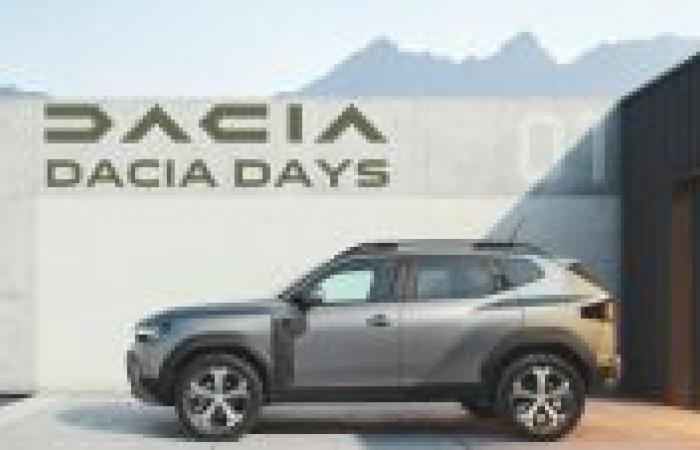A unique economic model
The Dacia model is unique, based on the combination of three main components:
- THE design-to-cost (cost efficiency) as a guiding principlewhich aims for a cost advantage of around -15% compared to the competition by focusing on what really matters to customers, the “essentials”, and by capitalizing on the Group’s assets and the know-how of its 3 000 engineers.
- An unrivaled industrial and supply base with cost competitiveness at the best level thanks to a high factory utilization rate (> 130% – Harbour) as well as a strong level of local integration.
- A very efficient distribution model ensuring distribution costs around 50% lower than the Western European average, with a policy of almost no discounts and with 30% of sales coming from digital initiatives.
A success boosted by the new brand identity: low-cost At best-value-for-money (best value-benefit ratio)
In a constantly changing environment, impacted by inflationary pressures and the increasing number of regulations, vehicles have become more expensive. Dacia provides an obvious response to customers looking for affordable vehicles, with an appropriate content offering, thanks to the complementarity of its range and its different versions such as Extreme or Journey.
Thanks to its new brand identity which reflects its values of simplicity, authenticity and robustness, always at the right price, Dacia has become an essential brand in Europe with an attractive range.
Dacia is clearly a winning brand for Renault Group with 76% of its customers coming from the competition. Brand loyalty is also at the heart of Dacia’s business model. In fact, 68% of Dacia vehicle owners will purchase a Dacia model as a new vehicle; 81% will choose a Group vehicle.
Thanks to a simple range of vehicles at the best price level, Dacia benefits from a channel mix for individual customers reaching 80 – 85%, allowing it to apply a policy of low or even zero discounts. This leads to high residual values (+10 points on average compared to the market) as well as a remarkable level of dealer satisfaction.
Halfway through the year, Dacia is in the process of confirming, for the 4th consecutive year, its position on the podium for sales to individual customers in Europe thanks to its proposition best-value-for-money which attracts ever-increasing numbers of customers in an inflationary environment.
The success of Dacia is that of its vehicles. At the end of April 2024 (cumulative since the start of the year) in Europe:
- Sandero is the best-selling vehicle (and market leader, since 2017, for vehicles sold to private customers).
- Duster is number 1 in SUVs sold to private customers.
- Jogger is the vehicle most sold to private customers in the C segment excluding SUV and is on the podium for all C segments sold to private customers.
- Spring is the 4th best-selling electric vehicle to private customers in segments A+B.
Dacia’s unique approach to design-to-costecosystem and economic efficiency
Dacia’s approach consists of reversing the logic: from a standard method of product development where cost is the result to a design method design-to-cost where cost is the entry point.
A standard platform and reuse ofupper body are the keys to efficiency in terms of Capex and labor, while reducing the entry ticket and variable costs thanks to the effect of scale. Thus, Dacia will continue to reduce its costs and will benefit from the doubling of the volume of the CMF-B standard platform (all brands combined), which will reach 2 million units by 2030. At the same time, Dacia will maintain its Capex and R&D at a level below the Group average thanks to high rates of carry-over between vehicles, ranging from 40% minimum to 80%.
Dacia’s returns and efficiency are also driven by:
- a high factory utilization rate (> 130% – Harbour), in which a new vehicle is produced every 30 seconds,
- ultra-competitive ecosystems in Romania, Morocco and Turkey, with strong local integration of its supplier base.
Affordable doesn’t mean small: a solid product plan to ensure future growth
Currently leader in segment B, Dacia is entering segment C thanks to a carefully developed product strategy. After Jogger, Dacia Bigster will embody this evolution from 2025 and 2 other vehicles will follow. This will allow Dacia to double the coverage of its profit pool. The brand is therefore targeting 1 million vehicles sold in 2030, of which around 1/3 will be in the C segment.
Dacia will gradually move from accessible electrified thermal solutions to affordable electric vehicle offerings in Europe. This will be done “à la Dacia” to provide products adapted to the demands of its customers and take advantage of the technological building blocks of Renault Group and Ampere. This approach will contribute to the objective of reducing Dacia’s carbon footprint by 50% by 2035.
At the same time, Dacia confirms that it plays a role of safety net for Renault Group in terms of the pace of electrification, and provides a solid basis for a profitable thermal offer. Dacia is helping to reinvent the thermal value chain through cooperation with HORSE Powertain by developing disruptive engines adapted to alternative fuels.
Increasingly higher margins and returns
Dacia’s economic model and product approach ensure strong growth as well as solid profitability which translates into remarkable returns:
- Dacia plans to double its turnover between 2022 and 2030, coming from half the volume and half the mix and price, while fixed costs are expected to increase slightly over the same period.
- Dacia already generates a solid double-digit operating margin and aims to reach 15% before 2030.
- Dacia plans to establish its champion profile in terms of performance with an ROCE higher than that of Renault Group (Group objective > 30% from 2025) and which should be multiplied by 2 between 2022 and 2030.






